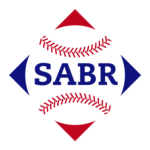I’ve played baseball board games for more than 50 years. This is the one that started it all.
The game was endorsed by Hank Bauer, who managed the Orioles to the World Series title in 1966. Be A Manager, from Bamco (touted as “A Sy Marder Creation”), was released in 1967, with the player cards based on statistics from the 1966 season.
I’ve never seen any other versions of this game, aside from the original American League and National League versions. I acquired mine – the American League version – as a gift from my mother, who surprised me with it after a shopping trip. She found the game on sale for, as I recall, 50 cents; I think original retail was $4.99.
The game included individual pitcher and batter cards for each team, which in 1966 meant 10 teams, with 20 cards for each team. I still recall the thrill of seeing Mickey Mantle’s card, which was a big deal for an 8-year-old kid (even though the Yankees were a last-place club in 1966).
The game’s playing field was laid out in traditional fashion. The home team’s pitcher card was placed on a spot above the visiting team’s lineup on the left side of the diamond, and you would move the hitter’s card to the “batting” position as you moved through the lineup. The setup was reversed on the right side of the diamond.
There were four baserunners, which were placed into slotted cardboard stands. Baserunners then could be moved into their spots on the bases.
Dice were at the heart of the game. A roll of the dice was followed by consulting the Dice Chart, which showed the various combinations enabled by the three die. The resulting number, based on the three-die combination, was then found on either the pitcher’s or batter’s card – a number that then revealed the result of the play.
The game came with scoresheets, and also with team name stickers that could be applied to a player card in the event of a trade.
I set up the game on a bar in the basement of my childhood home, and usually played while listening to broadcasts of either the Detroit Tigers or Cincinnati Reds during the late 1960s and early 1970s.
A challenge, at least for me, was to decipher the strategy behind the creation of the pitcher and batter cards. Those who have played other games – such as Avalon Hill’s Statis-Pro – know that some come with instructions on how to create new player cards. I wanted to be able to keep my Be A Manager game up to date (especially after expansion in 1969), and knew that meant figuring out how to update and create player cards as needed, which I did for a few years before moving on from the game.
There are several sites with information about the game, including Worthpoint, Spooky’s Hobby Shop, and an informative video on YouTube.


I would be very interested in learning about what you did to figure out the game. I have reverse-engineered a number of other games. This one seems like it could be similar to SI Baseball, Batter Up!, and Grand Slam (by Sming).
I just purchased a “complete” 1967 game and it seems to be missing 1 of the 12 LA Dodgers player cards. The game includes these 11 cards: Willie Davis, Ron Fairly, Lou Johnson, Jim Lefebrve, Pee Wee Oliver, Wes Parker, John Roseboro, Dick Stuart, Jeff Torborg, Maury Wills and the Pitchers Batting Card. Can anyone tell me which card is missing? Thanks, David.
I’m guessing Tommy Davis is missing. I played this game back in the ’60s and still have some of the cards. It’s a great game despite it’s shortcomings (no fielding!).
I can send you a free copy of the Tommy Davis card if you’re interested.
This game was a haven of peace for me during/after my parents divorced and we moved to a new neighborhood. I actually kept stats (book) for each game I played. For the most part the outcomes matched what was happening in the real world. Not only did the game grant me solace, it created a love for data that I use personally and professionally.
Grateful to the creators!